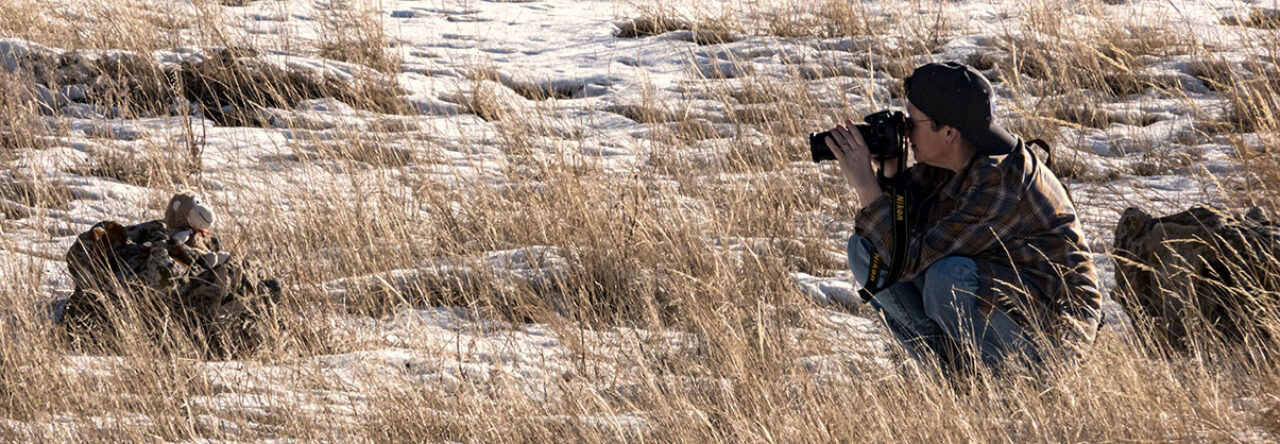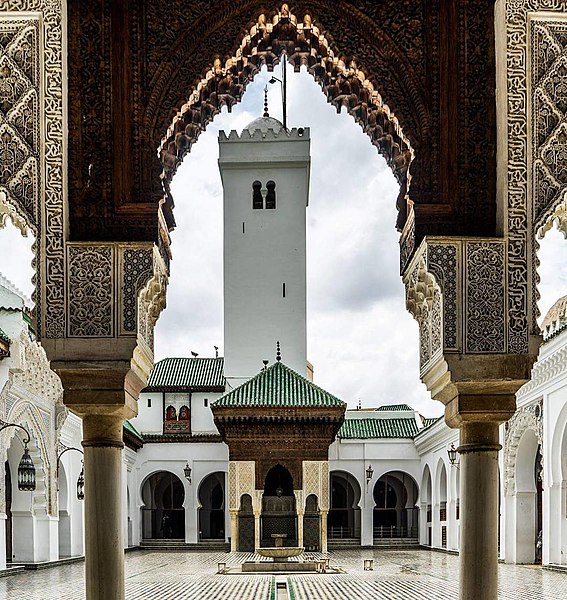The oldest existing, continually operating, and first degree-awarding university in the world is in Fez, Morocco. So is the oldest library in continuous use. A women established both.
Born c. 800 CE, Fatima bint Muhammad Al-Fihriya Al-Qurashiya was an Arab Muslim born in Mairouan, in present-day Tunisia. Her family was not wealthy, but they traveled with others during a migration to Fez where her father became a successful merchant.
He made sure his children, Fatima and her sister, Maryam, were well-educated. They studied the Fiqh and the Hadith.
What was known about her life was likely destroyed in the Al-Qarawiyyin library fire in 1323. What we do know was written by Ibn Abi-Zaraa, a fourteenth century historian. Fatima was married, but her husband and her father died shortly after the wedding.
Her father left Fatima and Maryam all his wealth. Fatima made sure the money was spent wisely.
Fatima and Maryam went on to found mosques in Fez, Al-Qarawiyyin and Al-Andalus, respectively. Fatima used her inheritance to purchase the mosque and rebuild it. She also purchased the surrounding land to double the size of the mosque. Under Fatima’s careful supervision, she built it modestly, but with incredible architecture.
Tunisian historian Hassan Hosni Abdelwahab wrote in, “Famous Tunisian Women,” that Fatima “committed to only using the land she had purchased. She dug deep into the land, unearthing yellow sand, plaster, and stone to use, so as not to draw suspicion from others [for using too many resources].”
When it was completed eighteen years later, Fatima went inside and prayed. She named the mosque Al-Qarawiyyin in honor of the immigrants from her hometown.
With the mosque complete, Fatima turned her attention toward education. She established the University of Al-Qarawiyyin. The university is now the oldest continually operating university in the world. It was the first to award degrees, including Islamic Studies, mathematics, grammar, and medicine.
Fatima is also credited with the oldest library (some say the second oldest) in continuous use, which is located within the university. It opened in 859 CE. Many locals had never been inside before.
We knew where it was more or less, but could not enter. It was this big, mysterious place,” recalls Aziza Chaouni, a Fez native and the architect who has overseen al-Qarawiyyin’s restoration. “I had no idea what lay behind its gigantic iron doors.
The library, which had been rotting and had a river running under the floors, underwent a large restoration project and was reopened to the public in May 2016.
It had undergone other restorations over the years, but Aziza Chaouni, the Canadian-Moroccan architect who oversaw the project, said there were other issues to consider.
Throughout the years, the library underwent many rehabilitations, but it still suffered from major structural problems, a lack of insulation, and infrastructural deficiencies like a blocked drainage system, broken tiles, cracked wood beams, exposed electric wires, and so on,
The Al-Qarawiyyin library houses more than 4,000 manuscripts, including a ninth century Qur’an written in Kufic script on camel skin and some of the earliest collections of hadiths are preserved.
The library, which used to connect to the mosque next door, now has strict security in a special, temperature-controlled room, and an underground canal system designed to protect the valuable artifacts inside.
Fatima’s desire to pass on the value of learning has not been lost on the people of Fez.
The people who work here jealously guard the books,” says one of the caretakers. “You can hurt us, but you cannot hurt the books.
Fatima passed away c. 880 CE, but her legacy of passing on knowledge from one generation to the next impacted millions. Her mosque, university, and library still stand, a lasting legacy to her ideals.


Leave a Reply